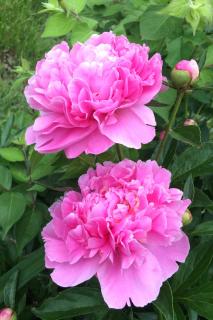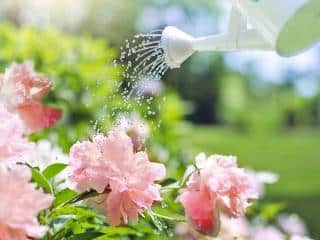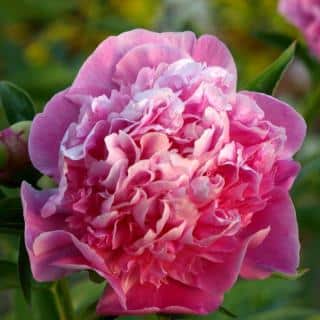

Peony is a beautiful flower, but it tends to be choosy.
Basic Peony facts
Name – Paeonia
Family – Paeoniaceae
Type – perennial
Height – 1 ½ to 6 ½ ft (50 to 200 cm)
Exposure – full sun, part sun
Soil: rich and moist – Foliage: deciduous – Flowering: spring → summer
The blooming depends heavily on how well it is cared for. From spring to winter and from planting to the removing of wilted flowers, here is all the advice needed to grow them.
It is recommended to plant your peonies in fall spacing them 30 to 40 inches (80 to 100 cm) apart.
If you have purchased your peonies in containers, you can wait until spring to plant them, once freezing is over and before the heat sets in. Provide for regular watering over the first year.
To enhance flower-bearing, add organic soil conditioner such as manure and seaweed.
 Choose a well-lit area that isn’t too hot. Part shade is fine, too, but you’ll have slightly less flowers.
Choose a well-lit area that isn’t too hot. Part shade is fine, too, but you’ll have slightly less flowers.Peony propagation is best done through root division in fall or at the beginning of spring.
 Pruning peonies, in their herbaceous or their tree form is not a necessity, but experts share that it boosts flower-bearing dramatically!
Pruning peonies, in their herbaceous or their tree form is not a necessity, but experts share that it boosts flower-bearing dramatically!
To stimulate budding of new flowers, remove wilted flowers regularly (deadheading).
Prune delicately in fall or at the end of winter, removing any dead wood and the more fragile branches.
Herbaceous peonies die away naturally when the cold spells start, and reappear in the following spring.
Do not remove leaves before they have died off, because peonies need them to stock up on nutrients for the next season’s blooming period.
Peonies love having lots of water!
 This will lead to lush growth and abundant blooming.
This will lead to lush growth and abundant blooming.
It’s best to use rainwater if you can collect it, and to water in the evening or early morning to limit losses due to evaporation.
Try not to get the foliage or flowers wet, because in hot weather the plant will get covered in powdery mildew if you do so.
As a cut flower in a vase, your peony will last quite a long time, but remember to top up the vase every day – it will drink it empty in no time!
– Verticillium wilt – peonies wilt and die.
– Thrips (tiny winged insects) and nematodes (worms) are aggressive pests.
– ‘Alba Plena’ – white, double flowers.
– ‘Rosea Plena’ – pink, double flowers.
– ‘Crimson Globe’ – red flowers.
– ‘James Crawford Weguelin’ – large, carmine red flowers.
This perennial is herbaceous or shrubby, and its blooming period is generous and lasts for all of spring.
 Tree peony has the disadvantage of growing more slowly than herbaceous peonies.
Tree peony has the disadvantage of growing more slowly than herbaceous peonies.Their flowers may be fragrant, and stand out forming an absolutely ravishing solitary round ball.
Peonies are most commonly planted in perennial flower and shrub beds, along hedges or in secluded parts of the garden.
You can cut a peony flower and put it in a vase, it will hold for a very long time!
Peonies are rather fragile. If they are to be moved at all, handle them with utmost care.
I need to see more, a comprehensive pictorial with description on diseases and their treatment.